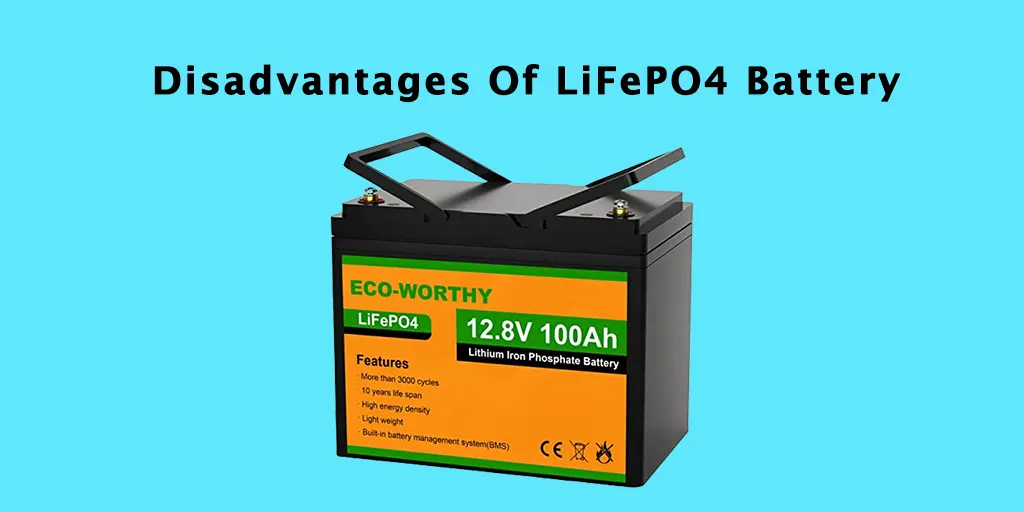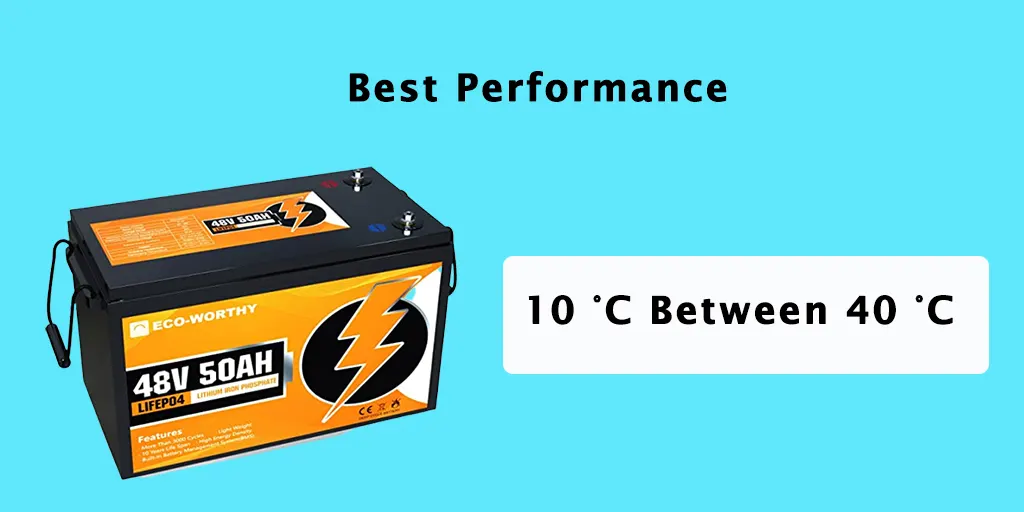To understand the disadvantages of the LiFePO4 battery, you have to look into its chemistry. Only then can you find them.

Here are the 9 disadvantages I could make out.
1. Higher Price
LiFePO4 batteries are more expensive than other commercial batteries.
You don’t have to get into the battery for that. Looking around, you will find that LiFePO4 batteries cost around $137 per kWh.
Well, you have to look inside the battery anyway because the main reason behind this battery being expensive is its components. LiFePO4 batteries have lithium iron phosphate cathode and graphite carbon electrodes with a metallic backing anode.
These are unique materials for battery technology, and that’s one of the reasons this battery is so expensive. Other reasons are this battery’s long lifespan, excellent stability, and safety features.
2. Low Nominal Voltage,
Another disadvantage of the LiFePO4 battery is its low nominal video. Each battery cell can produce 3.2V, which is lower than other batteries. That’s why you must ensure the charging voltage does not exceed 3.65V.
Because of the low nominal voltage, the battery reduces its energy. As a result, it ultimately affects the performance of this battery. The low nominal voltage can melt down the inside components of this battery if the amperage suddenly increases.
According to a study published in Springer journal, a constant low nominal voltage can affect the battery’s state of health (SOH) and push it further towards failure.
Although the LiFePO4 battery has no chance of catching fire, igniting, or even exploding, it can damage inside components anyway.
3. Low Energy Density
Compared to other batteries, Lithium iron phosphate or LiFePO4 has a low energy density. It has a lower energy density compared to other batteries in the lithium family. You can take a Lithium-ion battery as an example.
Lithium-ion batteries have a higher energy density of 150 to 200 Wh/kg.
On the other hand, a lithium iron phosphate or LiFePO4 battery has a higher energy density of only 90 to 120 Wh/kg.
As you can see, a LiFePO4 battery has far less energy density than a lithium-ion battery. Even lead-acid battery has a higher energy density of 150 Wh/kg. That’s why it requires more protection.
The following table shows the energy density of various batteries.
| Battery | Energy Density |
| LiFePO4 | 90-12 W/Kg |
| Lithium-ion | 150-200 W/kg |
| Lead-Acid | 150 W/kg |
| Nickel Cadmium | 50-150 W/kg |
4. Balancing Issues With Aging
LiFePO4 battery chemistry has a pretty good balance. It means the battery is well matched for its capacity and voltage. But it does not remain in the same condition. As the battery ages, you will find issues with balancing.
As a result, you will have to use a balancing circuit that controls the voltage by cycling your battery to maintain its balance. It will keep an equal voltage at all states of charge.
According to a study conducted at Aalborg University, the balancing device can effectively balance the LiFePO4 battery and is more accurate than manual balancing. However, you have to check the voltage and capacity of your battery using a multimeter.
5. High Self-Discharge Rate
When you are not using your LiFePO4 battery and storing it at a proper temperature, the battery will self-discharge at a 2% rate per month. You might think it’s pretty low. But, the lithium-ion battery has an even lesser discharge rate.
An unused lithium-ion battery kept at the right temperature would self-discharge at a 1.5% rate per month. The rate can increase for both batteries if the temperature rises. However, you would expect a better discharge rate from a battery like LiFePO4.
6. Performance At Low-Temperature

LiFePO4 battery performs at its best between 10 degrees Celsius to 40 degrees Celsius. It also works pretty well up to zero degree Celsius. But you should never charge your LiFePO4 battery below zero degrees.
If you do that, you might cause lithium plating. It is a process that reduces your battery’s capacity and even can cause a short circuit. As a result, your battery might become permanently damaged.
7. Battery Performance At High Temperature
Too much high temperature can negatively affect your LiFePO4 battery, decreasing its capacity and performance. Temperatures higher than 40 degrees Celsius can damage your battery cells.
According to a research paper published in IEEE journal, the higher temperature can destabilize the battery electrodes, resulting in a rapid decrease in discharge capacity.
Besides, because of the heat, the internal resistance will increase and will eventually shorten your battery life.
8. Transportation & Aging Effect
Transportation and aging are still issues with the LiFePO4 battery. Aging reduces the power output capabilities and energy storing capabilities of this battery.
On top of that, if you do not transport LiFePO4 batteries at the right temperature, their capacity and output will decrease.
9. Not Suitable For Small Devices

LiFePO4 batteries have low energy density and deep discharge. As a result, this battery is unsuitable for small devices like your smartphone. It’s a huge limitation.
Because of its density and deep discharge, LiFePO4 batteries are still only used for electric vehicles and solar battery banks. So, it couldn’t become as useful as the lithium-ion battery to all people.

Eng. Matthew Joseph Nandirio is the Founder of walkingsolar.
After graduating from the University of Houston in 2002, matt started working as a Solar Electrical Engineer for several multi-national solar energy companies.
He has a wide range of experiences including solar system requirement analysis, planning, maintaining, debugging and even solar device development through research.
He now shares his 20 years of expertise through his articles on the walkingsolar website.
Further, he is also the author of two books on Solar Technology, “Solar Power for Villages” and “DIY Solar System for Dummies”.
